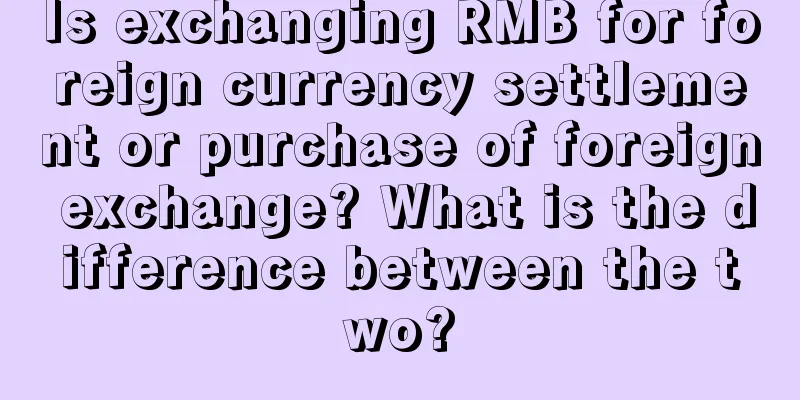How do new brands rise?

Every industry in the world already has well-known brands that represent the industry. For beverages, there are Coca-Cola and Pepsi; for sports, there are Adidas and Nike; for cars, there are BMW and Mercedes-Benz; for computers, there are Lenovo and Dell; for mobile phones, there are Apple and Samsung; When there are well-known brands dominating the market in every field, why are there always new brands emerging and occupying the market, and even becoming the king of the market? What do these new brands rely on? Why do they stand out in a world full of giant brands? Let’s answer this question first and then explain it later. 01The core reason why new brands can rise in the market, in addition to the differentiation of the products themselves, is culture. Users from different circles have different cultural beliefs. Because culture makes brands different. Culture comes from people's nature of loving comparison and being different from others. Take the rich and the poor as an example. Having unique taste is the difference between the rich and the poor. For the educated and the uneducated, being proficient in elegant knowledge and technology is the difference between the educated and the uneducated. In his book Distinction, published in 1979, Bourdieu believed that each class has its own unique taste system: "Taste brings people and things together." Taste represents a kind of culture. This makes many people spend money on goods that do not belong to their class in order to keep up with the pace of high-end people. In the 1980s, Paul Fussell published a book called Style, which explored the consumption and living habits of different classes. In the book, he pointed out the perceptions of different classes about consumption. "People at the bottom are happy to believe that class is based on how much wealth a person has; people living in the middle admit that money is related to class differences, but a person's education and the type of work they do are equally important; people close to the upper class believe that taste, values, lifestyle and behavior are indispensable criteria for judging class identity, and do not consider money, occupation or education level." Douglas Holt, a professor at Harvard Business School and author of "Cultural Strategy", is one of the earliest scholars to systematically explain the important role of culture in brands. He calls brands with strong cultural symbolic meanings brand icons, which represent an identity myth that consumers use to resolve their identity desires and anxieties. Cultural differences and dissimilarities lead to different interests, hobbies, values, behaviors, habits and occasions, which in turn form different circles. "For brands like Coca-Cola, Budweiser, Nike and Jack Daniel's, consumers value their brand stories mainly because of their identity value. As vehicles for self-expression, these brands are full of stories that consumers believe are valuable in building their identities. Consumers flock to brands that embody the ideas they admire and help them express who they want to be." Therefore, whether these brands are doing print advertising, video marketing, or even writing about culture, they will create a story that is highly consistent with their circle theory. 02The key to cultural positioning lies not only in giving a product a special culture, but also in the ability of this culture to form a circle, a circle that outsiders yearn for. Consumers have a herd mentality. Most people are consciously or unconsciously looking for the circle they want to join. The tastes of these circles are often similar, and the brands they can accept are also limited. If some people's brand preferences are different from those of most other people, they will soon be expelled from this circle. The famous Bilibili started with the circle culture of the second dimension. We always hope that there is a shortcut that can help us enter a circle, which will bring huge and most important benefits: security and success. This shortcut is to have a brand with certain cultural symbols. Once you own the products of these brands, you will get the key to enter the circle you want to enter. For example, when you attend a party and find that everyone is carrying Prada bags, you will definitely want to hide the MK bag in the corner. When everyone is wearing Rolex watches worth hundreds of thousands of dollars, you will definitely pull down your cuffs to cover your DW watch. When someone drives a Ferrari to ask you out, you would rather take a taxi than drive your own Corolla. In this case, you will feel insecure and a failure. On the contrary, when you wear the same brand of clothes and tie and watch as the person who shines at the party, it will be easy for you to walk up to him, chat with him, and enter his circle. If you want to enter a certain circle, you have to keep up with the cultural taste and consumption of this circle. Even running is divided into circles. People in the financial circle mainly run with people in their own circle. After a long time, the differences between people in different circles are particularly obvious. Take the example of shoe speculation on Dewu. In the early years, the people who speculated on shoes were actually a group of young high school students. High school students can only wear school uniforms during school, so they cannot highlight their uniqueness. In terms of clothing, they can only reflect this through shoes. The more personalized the shoes are, the more they can reflect their uniqueness. In this way, the student group is actually divided into at least two groups: those who wear trendy shoes and those who wear ordinary shoes. Students who wear trendy shoes naturally form a circle and look down on students who wear ordinary shoes. Students who wear ordinary shoes either spend money to buy trendy shoes to enter this circle, or they will feel like failures. So, if your brand develops a certain culture, it creates an opportunity for them to identify themselves as part of that group. 03Lululemon was founded in 1998. Compared with sports brands such as Adidas and Reebok, its history seems short, but it took only 22 years for its market value to exceed 40 billion US dollars. It took Adidas 68 years and Nike 46 years to achieve the same achievement. In July 2022, Lululemon's market value surpassed Adidas and became the second largest sportswear brand in the world by market value. Let's take a look at the way lululemon has broken through. The success of lululemon is very clearly pinpointed in terms of cultural positioning - the rise of female consciousness. Yoga has not been popular in the world for a long time. Initially, there was no brand that made yoga clothes specifically for women. The only choices for women were those that made men's sportswear into smaller sizes and changed to pink sportswear, which of course were not comfortable to wear. In the late 1990s, more and more women graduated from college. They had great jobs, their own apartments and pets, and they loved sports, travel, fashion, and were willing to pay for high quality. Wilson saw this market segment and, in combination with the environment of rising female consciousness, called this segment "Super Girls," and then the story of lululemon began. Under the cultural positioning, lululemon has been extremely successful in the circle, and it has held large gatherings for yoga and sports enthusiasts in major cities around the world to attract them to become lululemon's customers. Lululemon has formed a community system of store educators, brand ambassadors, and consumers through circle marketing, which has attracted more and more customers. In recent years, many people have worn lululemon yoga clothes as outerwear. These people have become more obviously representatives of the "women's rise" culture and are attracting more women to join this circle. Putting aside the products, at the cultural level, the leading brands initially created a culture, but as time goes by, social culture will gradually change, and the market will form new culture, fashion and consumption trends. At this time, if the new brand happens to grasp this point and determine its own differentiated cultural positioning, it will be able to attract more and more people to join its industry and surpass the old brand one day in the future. For new brands to rise, they need to find the right circle, deepen the circle culture, and then create differentiated products, which is the way for circle brands to break through. For new brands, implementing circle marketing is the best way for brands to break through. Author: Liu Yichun Source: WeChat public account "Liu Yichun's Brand Business Innovation (ID: shangyeyiguohui)" |
<<: How does Mortal Advertising write copy?
>>: Can the “lowest price” save e-commerce platforms?
Recommend
Taking over from "Mother Wang", @Shenzhen Health Commission becomes the new "top streamer" in the short drama track
This article introduces the reasons behind the pop...
Is it good for a sophomore girl to engage in cross-border e-commerce? What is the prospect of cross-border e-commerce?
Cross-border e-commerce is a rapidly developing in...
What is the difference between Amazon advertising portfolio and ad group? How to set up ad group?
When operating the Amazon platform, I believe that...
Short drama successfully sneaks into the Spring Festival schedule
Last Spring Festival, there were hit dramas such a...
What is the annual income of SOHO foreign trade? Is it too late to start SOHO foreign trade now?
Foreign trade SOHO, that is, individuals or small ...
What is the difference between Amazon and Taobao? Five major differences
There are two giants in domestic e-commerce and cr...
Where is the Shopee wallet password? How to get it?
As a cross-border e-commerce platform, Shopee is q...
Which logistics model should eBay mainly adopt? What is eBay's logistics model?
With the rapid development of e-commerce, more and...
The Certainty and Imagination of Brand Variety Show Marketing in 2024
In the past two years, as variety shows have lost ...
How to do Pinduoduo full site promotion
To do e-commerce well, you must do marketing promo...
How does eBay distribute products accurately? What is the method?
As the eBay platform continues to grow, more and m...
How much does it cost to open a Lazada store? Is there any support for opening a Lazada store?
Lazada's current market share is not bad, so m...
How to advertise on Wish? What is the method?
As one of the cross-border e-commerce platforms, W...
Revelation from the Spring Festival period of short short dramas: Can the two promote each other?
This article deeply analyzes the development trend...
How can brands create targeted content for the back-funnel population?
This article mainly introduces a marketing strateg...









